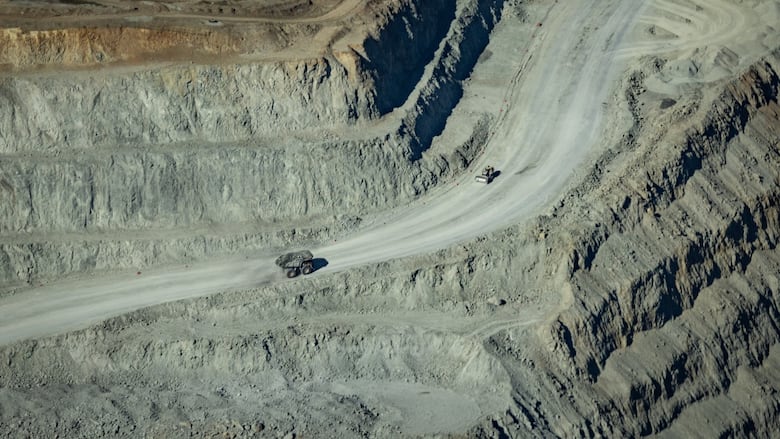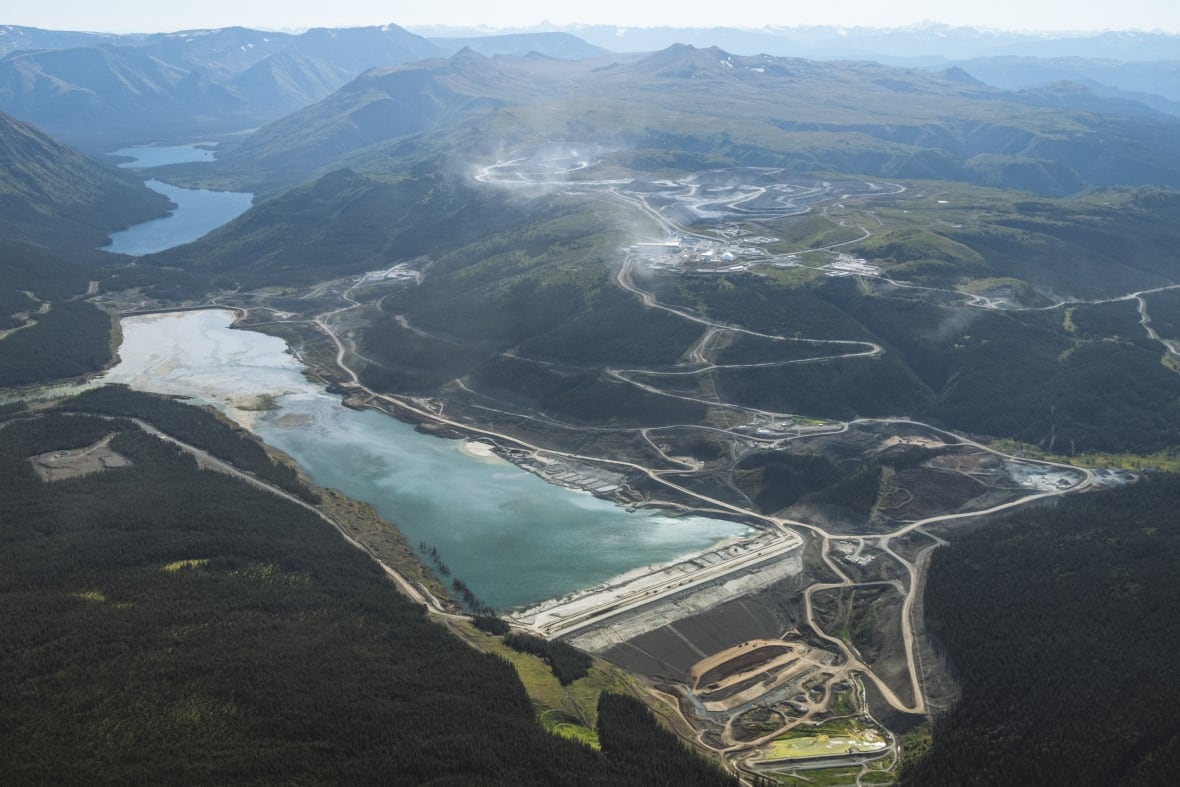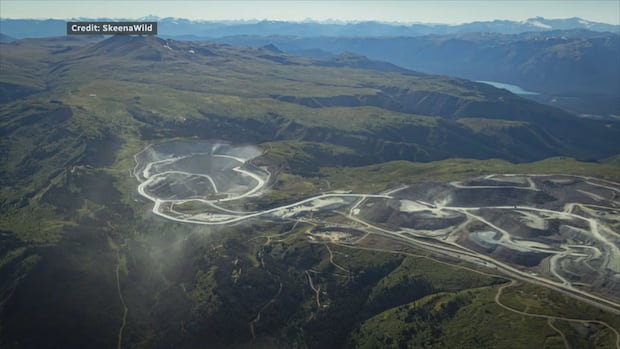What is the Red Chris mine, and why is B.C. fast-tracking its expansion?
Site of 3 trapped miners looking to change from open-pit to block-cave mining, extending lifespan

UPDATE: Newmont Corp. says the miners who have been trapped for days in the Red Chris mine in northern B.C. were successfully brought to the surface on Thursday evening.
The open-pit copper and gold mine in B.C.'s far north, where three miners are trapped underground, is slated to transition to a new form of mining soon, in an expansion project the provincial government says it intends to fast-track.
The Red Chris mine was opened in 2015, around 130 kilometres from the B.C.-Alaska border, and is where three contracted employees are stuck following two "fall-of-ground incidents" in a tunnel leading to an underground work area.
It comes as the decade-old mine is experiencing a widespread change to how it operates, as the site looks to implement a new method of "block-cave mining" to extend the open-pit mine's lifespan, with the co-operation of the Tahltan Nation.
Here's what you need to know about the Red Chris mine, its transition to a new form of mining and why it is being fast-tracked.
Where is the Red Chris mine?
The Red Chris property spans more than 230 square kilometres and is 80 kilometres south of Dease Lake, B.C.
It began operations in 2015, though it first received regulatory approval a decade prior, according to a presentation from Newmont, the U.S.-based majority owner of the mine.
The Red Chris mine was controversial at its outset, with First Nations in B.C. and Alaska warning at the time of its potentially negative impact on the environment.
Protesters from the Tahltan Nation, on whose lands the mine sits, even blockaded the mine site in 2014. Now, however, the nation is fully involved with its operations.
How much does it produce?
According to the B.C. government's environmental certificate, the mine is approved to produce 11 million tonnes of copper and gold ore per year until 2038.
The Tahltan Central Government said it employs around 220 members of the nation, and generates approximately $100 million annually in business with the nation's development corporation.
Why is it changing mining methods?
The three workers currently trapped at Red Chris are contractors who are boring a hole to start up "block-cave operations" at the mine within the next three years, according to a union representative.
According to the B.C. government, block-cave mining involves ore being mined by collapsing the rocks from above into tunnels below.

Newmont says in a video on its website that, in contrast, open-pit mining involves blasting large volumes of rock to expose mineral-bearing rock.
"Because Newmont's expertise in block-caving allows mining at deeper levels, we can access more of the ore body and increase the longevity of Red Chris mine," the company says.
It estimates the new mining method would extend the mine's lifespan by 13 years, beyond its forecasted end of life in 2027.
Why is the B.C. government fast-tracking development?
In response to U.S. tariffs, the B.C. government said the mine's expansion would be among 18 resource extraction projects that it expedites through the provincial approval process.
Changes to the Red Chris mine can only be made with the consent of the Tahltan Nation, and the change to the mining method would require an update to the mine's environmental assessment certificate.
In an open letter to the Tahltan Nation from Newmont on Feb. 8, the company said the government's prioritization of the project would not change the company's approach.
"Newmont fully respects that for consent to be given, the process must allow for meaningful deliberation and consideration by Tahltan to enable an informed and thoughtful decision," the letter reads.
Rescue efforts underway
Newmont says the three miners — two of whom are from B.C., and one who is from Ontario — are in designated refuge bays, which are equipped with food, water and ventilation in case of an extended stay.
A "stand-down of operations" at Red Chris is now in place to focus on the response, according to the company, which says its priority is to ensure the employees' safety.
With files from Lauren Vanderdeen and Jessica Cheung


